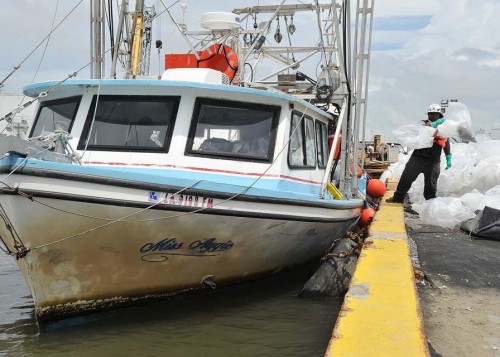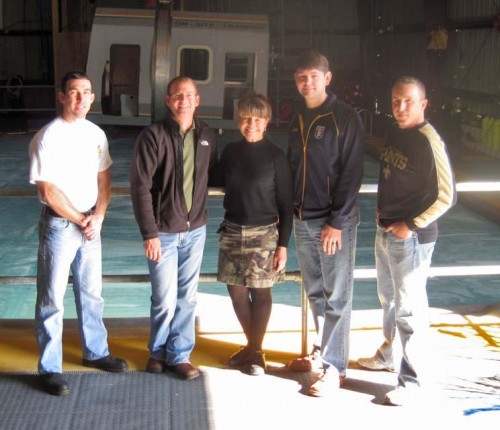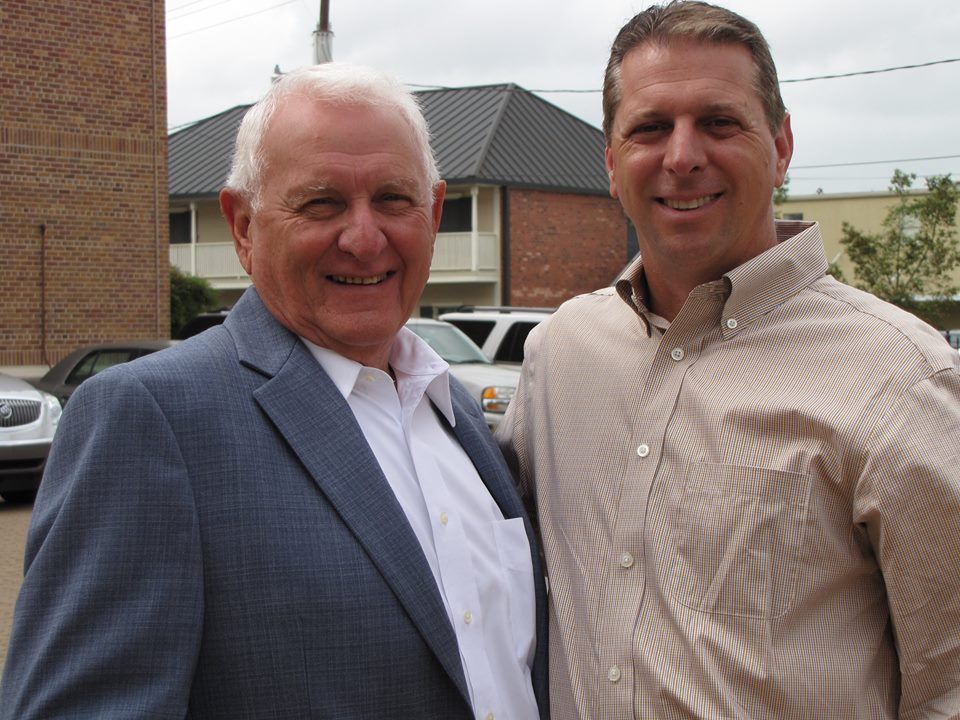
Taxable oil spill income could be another mess
February 1, 2011Thursday, Feb. 3
February 3, 2011It’s a fact of life in the workplace – safety is a top priority. In many workplaces, it’s required by law.
In 1970, President Richard Nixon signed the Occupational Safety and Health Act into law to ensure workplaces were free from recognized hazards.
Additional rules and regulations covering hazardous materials, fire and field safety, offshore water survival and the like mean if a worker hasn’t had safety training before stepping on that helicopter heading offshore, he’s left behind.
It’s the job of On Site Training & Instruction to make sure that doesn’t happen.
Winona “BeBe” McElroy was teaching marine firefighting with the Coast Guard at South Louisiana Vo-Tech (now L.E. Fletcher Technical Community College) when budget cuts doused the flames on the program in the 1980s.
With encouragement from the Coast Guard and her husband Vic, McElroy accepted the challenge of starting her own school – On Site Training & Instruction Inc.
“I started out with a Nifty note pad and a 10-pound fire extinguisher. My husband would give me the names and addresses of five businesses to see each week,” McElroy said.
The business took flight when McElroy began receiving calls to teach fire safety classes and gained altitude when companies like Halliburton and Nabors Offshore signed on for more extensive safety training.
“Somewhere around 1994 or ’95, the business got to be too much. I went to my husband and asked him to work for me. He said, ‘I won’t go to work for you, but I’ll go to work with you,'” McElroy said.
That arrangement worked for three years until the consulting division experienced growing pains. That’s when On Site Training gave birth to McElroy Consulting and Vic McElroy opened an office on Corporate Drive.
“This has always been a woman-owned business – he just worked with me. On Site Training continues to grow and we complement each other,” McElroy said.
The On Site Training facility features classrooms and a training simulator situated over a 15-foot-deep indoor pool.
“For years, I used a plastic floating chair to teach water survival. But then the majors – like Shell – said, ‘You’re not using that any more. You have to have a full-size simulator with a crane, mechanical drop and rollover with an indoor pool.'”
Students spend mornings learning what to expect when they get in the simulator. They’re submerged at least four times – twice with the unit remaining upright; twice upside down.
“We have two divers watching. If anybody gets in trouble, we can get them out,” she said. “If someone does not do it and we have to help him out, he has to repeat it. We can’t assist you. We’re not going to be there in the Gulf with you.”
On Site Training instructors advise students to get a reference point before the simulator begins to submerge. Rushing water and the commotion of other students moving around inside the simulator can be disorienting.
“The old saying, ‘Follow the bubbles,’ doesn’t work. You can’t see under four feet in the Gulf, plus the saltwater is stinging your eyes. You have to be aware of your surroundings,” McElroy said.
Students must also learn how to properly evacuate a platform. On Site Training teaches the proper form for making the jump.
“They have to grab their jacket, cover their mouths, step off and cross their ankles. You can’t jump or spring because you want to enter the water like a pencil. If you don’t, you can get injured,” McElroy said.
Major oil companies tell the Houma native there are two reasons their employees fail safety training: they don’t jump from a platform properly, and they don’t pass simulator training.
“Everything else we do with them is extra. We teach them how to float, how to form a chain to stay together and to huddle. I cannot in good conscience give a student a (safety certification) card if he does not jump from that platform properly or do the simulator,” McElroy said.
Not that some haven’t asked.
Years ago, a company supervisor asked McElroy to sell him 50 HAZWOPER (Hazardous Waste Operations and Emergency Response) cards without taking the course. She refused, saying every person carrying one of those certification cards was a danger to himself and his co-workers.
“He compromises every man in that chopper if he freaks out. He’s going to drown half the guys in there by going nuts. That was 20 years ago and, every time he sees me, he still turns red,” McElroy said.
Even though the training at On Site is serious, the atmosphere is relaxed. Morning break is complemented with biscuits and coffee.
“The men like the atmosphere. They say it’s like home – it’s like family. I find that the men retain the information better because they’re not uptight. If they want me to get in the simulator with them, I’ll get in,” McElroy said.
Meeting the safety and training needs of various customers and making that training conducive to their work schedule can be a challenge. Sending large groups of employees to class can put a strain on company resources. McElroy holds training classes no matter how small.
“They’re like BeBe, I need the training but I can’t pull my crew in. I tell them you don’t have to pull your whole crew in. I’ll do half at a time, or even one at a time. You work with them to get their people trained to keep production going. You can’t shut down the company to go to school,” McElroy said.
Has anyone ever called McElroy to say, “This is what you said would happen and it did?”
“Yes. I’ve had that happen several times. I had a young man for fire training and he didn’t pass because I observed him doing something wrong with a piece of equipment,” McElroy recalled.
The man stopped her in the mall five years later and said he didn’t pass his exam because he didn’t use a pipe pole correctly.
“He said, ‘I went in a house fire and had to pull a ceiling with a pipe pole. I could hear your voice telling me how to do it right. It was like you were right there with me,'” McElroy said.
“I get goose bumps when I think where did 20 years go? When the times were hard, they were hard for everyone. But then when my customers grew, I grew. It still gets to me,” McElroy said.
Vic McElroy recalls growing up in the oilfield working without basic safety. “We just did what we thought was safe. We handled hazardous chemicals. That’s how it was,” he said.
With more stringent rules in place, On Site Training continues to grow. McElroy is even planning to add another classroom to her facility to handle the demand for her safety training.
On Site Training & Instruction Inc. staffers (from left) Ty Trosclair, Al Fox, BeBe McElroy, Brad Rhodes and Perry Odom, along with Mike Deroche and Frank Henry (not pictured) provide Occupational Safety and Health Act (OSHA) approved training. JENNIE CHILDS













